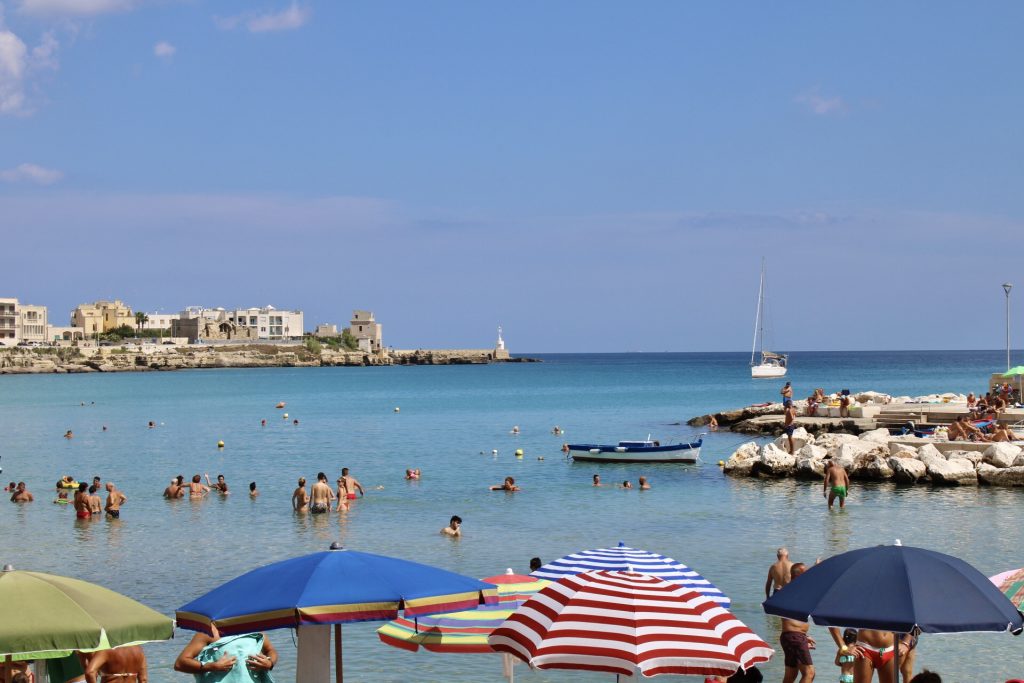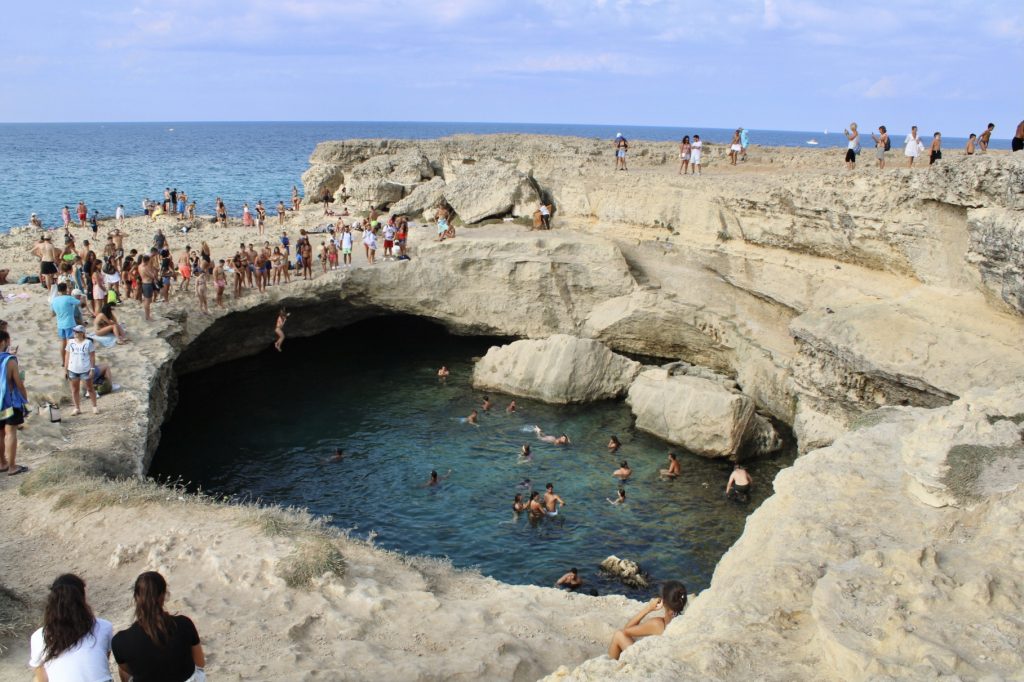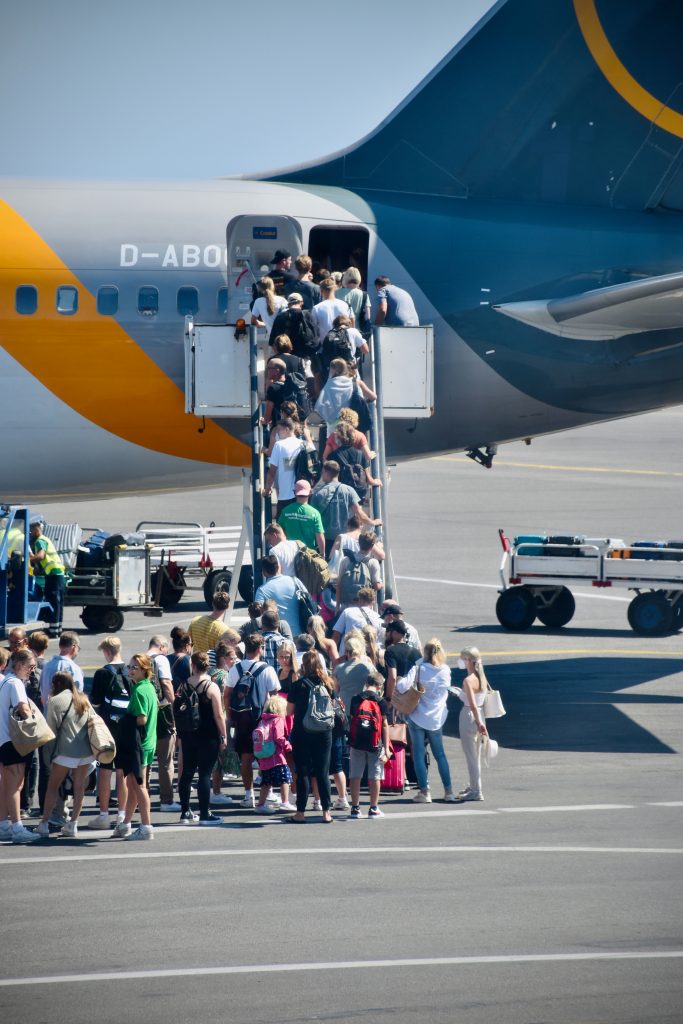Home » Mass Tourism: What Consequences?
Tourism and sustainable development
Author : Romane Pelletier
In 2019, the World Tourism Organization (UNWTO) estimated that the number of international tourist arrivals had reached more than 1.46 billion worldwide. These figures are three times higher than thirty years ago and perfectly illustrate the “mass” nature of tourism today.
The concept of “mass tourism” appeared in the 1950s. With the introduction of paid vacations in most European countries during the first half of the century and the post-World War II “return to normal”, European employees began to go on vacations, first at home, then outside their country of residence – a practice hitherto reserved almost exclusively for the social elite and the wealthy.
In the second half of the century, the process of decolonization led many countries around the world to turn to new economic sectors and new industries. International institutions such as the World Bank strongly encouraged the creation of tourism projects and even financed some in certain developing countries, such as the Dominican Republic, Mexico and Morocco.
Numerous tourist infrastructures blossomed all around the world, particularly along the coastline: seaside resorts, vacation centers and concrete hotel complexes became commonplace and began to welcome more and more visitors. Travel agencies developed innovative marketing strategies, “package tours” and “all-inclusive” stays became widespread; the development of the Internet and the introduction of low-cost travel companies also favored the massive arrivals of tourists in targeted destinations and for short periods.

As a very important source of profits, the tourism industry grew to become one of the most important on the planet: the UNWTO estimates that it generated about 1700 billion dollars worldwide in 2019.
Tourism even turned into a fundamental economic pillar for some countries: for example, it represented 26.4% of the GDP of the Seychelles or 19.7% of that of Thailand in 2019, according to data from the World Travel and Tourism Council. Although this sector generates financial and professional opportunities in the visited territories, its omnipresence leads to phenomena of dependence and economic vulnerability. The COVID-19 world crisis has clearly demonstrated this: the number of jobs in the tourism sector directly endangered by the crisis ranged from 100 to 120 million in 2020, according to the UNWTO, particularly in developing countries.
Despite its economic potential, mass tourism creates many inequalities. Many companies see its success as an opportunity to generate profit, often at the expense of local populations. Thus, the inhabitants of some popular destinations see the cost of their daily life increase drastically, where their income is not always sufficient to keep up. The benefits generated by tourism do not always generate positive local spin-offs, generally going to the large companies established on site rather than to the small businesses and inhabitants.
The desire to discover a country or a culture in just a few days – or even a few hours – encourages the development of exploitative forms of tourism. Most visitors come to discover a place without knowing its history or culture, and bring with them many preconceived ideas and stereotypes about local people and their way of life. To satisfy their search for exoticism and picturesqueness, “typical” villages featuring local communities began to appear in many countries; in these “villages”, tourists walk around observing locals posing all day long in traditional clothes, offering a fantasized and erroneous vision of their daily life, without necessarily being fairly compensated.
The arrival and movements of ever-increasing numbers of travelers are also causing a striking phenomenon of overcrowding in many destinations, known as “over-tourism”. Some places are so popular that locals are forced to give up their homes to get away from the flood of visitors. The city of Venice, Italy is one of the most striking examples, with an average of 545 tourists per inhabitant. The streets and infrastructures are not designed to accommodate such a large number of visitors, and the city quickly becomes overcrowded and its heritage altered. This situation even provokes a rejection of tourism by some inhabitants, who are fed up with the degradation of their way of life.

The phenomenon is the same in more and more tourist sites around the world – which want to reverse the trend. Dozens of them are starting to put in place regulations to counter the effects of over-tourism. The iconic Inca city of Machu Picchu in Peru now receives a limited number of visitors, which reached 1.5 million in 2019; in Australia, climbing the sacred Uluru Rock has been banned since October 2019 at the request of the natives Anangu, for cultural and safety reasons.
Stricter measures have been adopted to limit the environmental impact of mass tourism. Many natural sites are seeing their condition and biodiversity deteriorate with each visit: this is what is known as visitor erosion. The famous beach of Maya Bay, in Thailand, had to close in 2018 to reopen only in early 2022 to give the coral reefs time to regenerate; tourists now return only in limited numbers and with a ban on entering the water to protect marine life.
The generalization of tourism has been accompanied by a considerable increase in greenhouse gas emissions produced by the sector, mainly linked to the use of highly polluting means of transport such as airplanes or cruise ships. The latter are a real environmental scourge: according to a study by Transport & Environment, the largest cruise group in the world would have emitted in 2017 ten times more sulfur dioxide than all the cars in Europe, counting only their ships sailing in European seas… It was estimated during the COP25 that the emissions produced by tourism transport represented 22% of total transport emissions in the world.
The development of the sector also leads to an overconsumption of energy and an overexploitation of natural resources worldwide. For example, the maintenance and operation of hotel and leisure facilities require large amounts of water and electricity, where the surrounding populations sometimes have little access to such resources on a daily basis. The construction of these infrastructures can in itself have serious consequences if it is not carried out in a responsible way: deforestation, deformation of landscapes and disruption of local ecosystems are some examples.

To avoid contributing to the negative effects of mass tourism, it is important to keep in mind that every action counts. Limiting our environmental impact, optimizing the economic and social benefits of our trips and becoming aware of the importance of our individual behaviors are the keys to a better and more sustainable tourism. To learn more, please consult our responsible traveler charter.
Planning your trip and itinerary, getting informed about your destination and consulting the tourist offer available on site are all actions that allow you to better understand the issues related to travel before leaving. Choosing a destination outside the most popular tourist circuits, activities that respect the environment and local populations, as well as quality accommodations will make your stay a unique and more responsible experience. To help you find your way around, our online reservation platform Vaolo offers a wide selection of labeled accommodations and activities tested by a community of explorers around the world.
Finally remains the question of carbon emissions, generally produced during travelling. It can indeed be difficult to do without a plane, a rental car or a boat depending on the destination. However, there are tools that allow us to reduce our impact: for instance, carbon offsetting, which can be found on our website. By financing one of the proposed projects, you contribute to the development of means of managing and reducing carbon emissions elsewhere on the planet, thus offsetting your own emissions.
Subscribe to the travel newsletter from our collaborative booking platform Vaolo to find out what’s new, follow our explorers and receive tips for more conscious travel.
The use of the masculine gender has been adopted for ease of reading and has no discriminatory intent.
© 2024 All rights reserved. Village Monde.
By continuing to use the site, you agree to our privacy and cookie policy
I accept